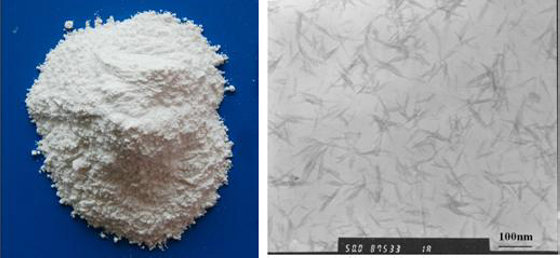
Hydroxylapatite, also referred to as hydroxyapatite (HA), is a calcium apatite in its naturally occurring mineral form with the formula Ca5(PO4)3(OH). A fluorapatite or chlorapatite may be produced if the OH−ion is replaced by fluoride, chloride or carbonate. Hydroxylapatite crystallizes in the hexagonal crystal pattern. Pure hydroxylapatite powder is of white color. However, naturally occurring apatites can also have brown, yellow, or green hue, resembling the coloration of dental fluorosis.
Hydroxyapatite Nanopowder/Nanoparticle (HApN), nanodots or nanocrystals are spherical or faceted high surface area oxide magnetic nanostructured particles.
Nanoscale Hydroxyapatite Nanopowder/Nanoparticle (HApN) are normally 20-80 nanometers (nm) with specific surface area (SSA) in the 15 - 50 m2/g range but sometimes available with an average particle size of 100 nm range with a specific surface area of approximately 5 - 10 m2/g.
Hydroxyapatite Nanopowder/Nanoparticle (HApN) is widely used as a biocompatible ceramic in many areas of medicine, but due to its bioactivity, and osteoconductive properties and resemblance to mineral bone, Hydroxyapatite Nanopowder/Nanoparticle (HApN) is mainly used as a drug-delivery system for bone therapy applications and contact with bone tissue. Moreover, Hydroxyapatite Nanopowder/Nanoparticle (HApN) has been used as a theranostic probe.
- Hydroxyapatite Nanopowder/Nanoparticle is used in materials science.
- Hydroxyapatite Nanopowder/Nanoparticle Is used in cosmetics.
- Hydroxyapatite Nanopowder/Nanoparticle Is used in archaeology.
- Hydroxyapatite Nanopowder/Nanoparticle Is used in animal structure.
Comments
Post a Comment